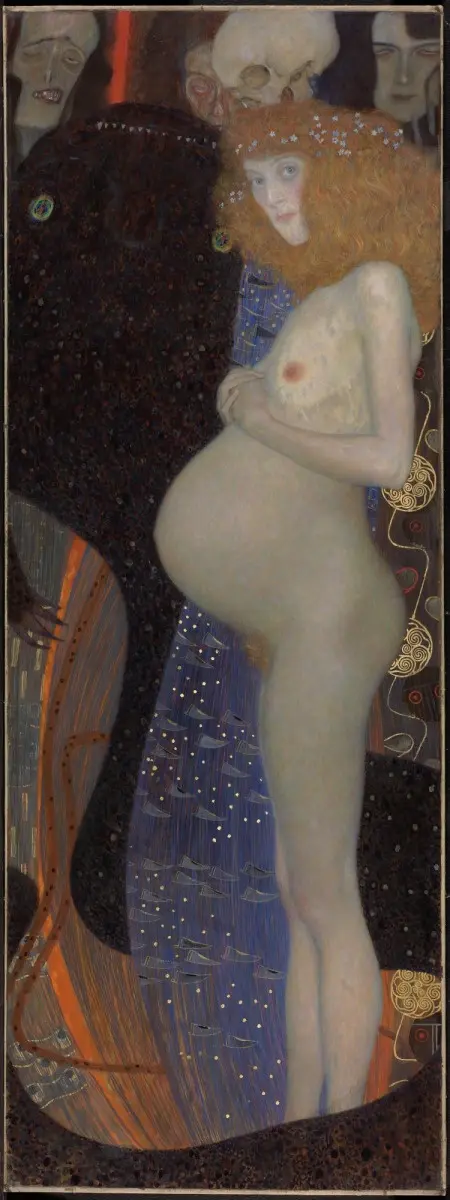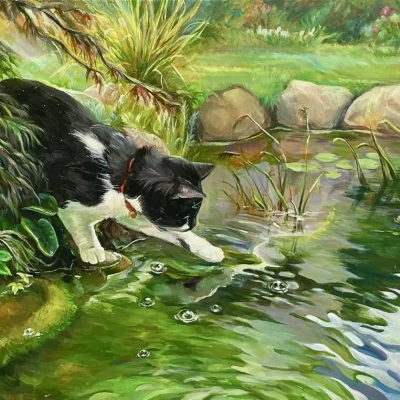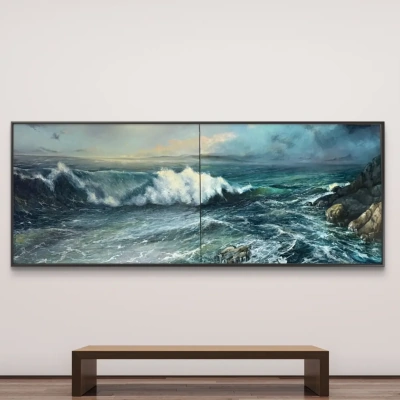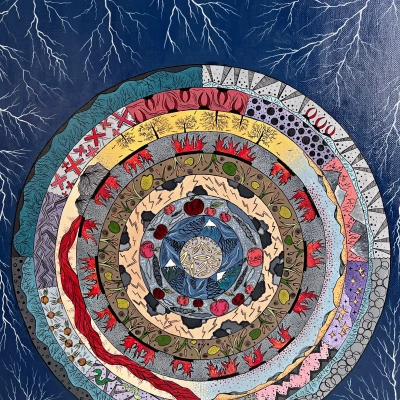A rare opportunity to view three paintings by Gustav Klimt (1862−1918), one of the greatest painters of the twentieth century, offers The National Gallery of Canada. It became possible owing to a long term loan from a private collection. Portrait of Elisabeth Lederer (1914−16), a commanding example of Klimt’s trademark female portraiture, and Forest Slope in Unterach on the Attersee (1916), a lush example of Klimt’s lesser-known, yet equally impressive landscape
paintings, are now on view in the European galleries, along with Hope I (1903), which the Gallery purchased in 1970. Hope I is the only painting by Klimt in a Canadian public collection.
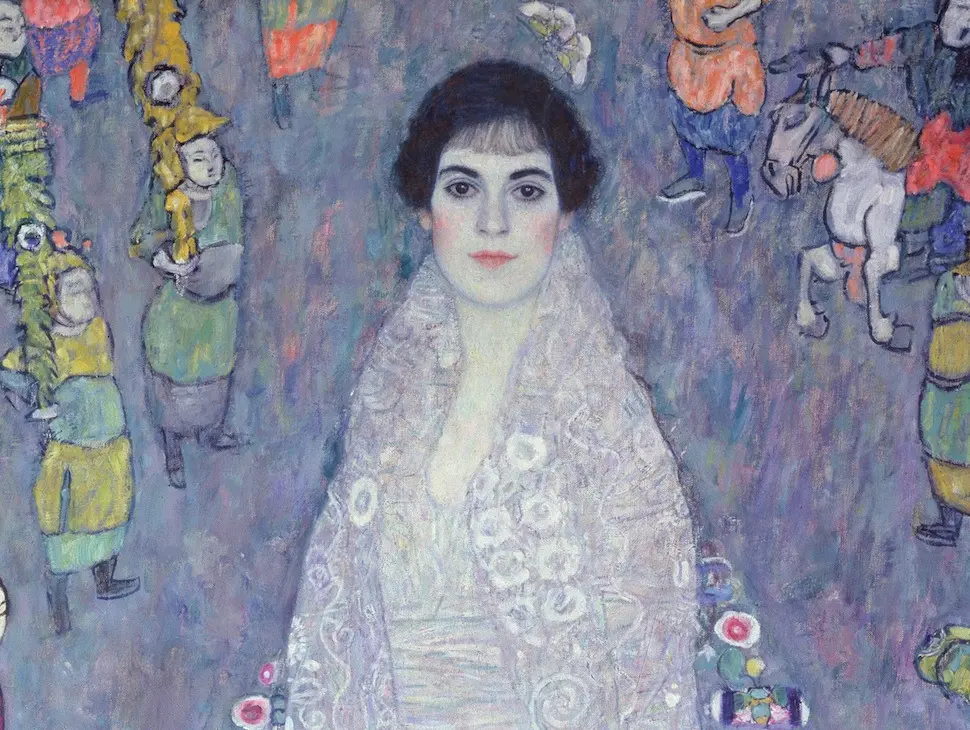
"These works will allow our visitors to experience the full visual splendor of one of the most inventive artists of his day," NGC Chief Curator Paul Lang said.

Fragment of the exhibition in the National Gallery of Canada with Gustav Klimt’s paintings "The Forest Slope in Unterah-am-Atters" and "Hope I". Photos via Artdaily.com
The most renowned member of the fin-de-siècle Art Nouveau movement known as the Vienna Secession, Gustav Klimt is celebrated for his painterly expressiveness and extravagant devotion to colour and surface materiality. He sought to break with the past and propose a new style and experimental mode of expression commensurate with the realities of modern life.
Commissioned in 1914 by the artist’s most important patrons, the wealthy Viennese couple August and Szerena Lederer, Portrait of Elisabeth Lederer (1914−16) portrays their twenty-year-old daughter. Elisabeth Lederer stands life-sized, her expression one of elegant self-confidence and youthful freshness.
Portrait of Elisabeth Lederer (Baroness Elizabeth Bachofen-Echt)
1916, 180×126 cm
"Klimt has transformed her cloak into a dazzling, quasi-abstract array of ornamentation and placed her on a brightly-coloured carpet that flattens the space while simultaneously drawing the woman out toward the viewer," says Curatorial Assistant Kirsten Appleyard.
According to her, more earlier portraits by the artist seduce via the rich physicality of their ornament—often conveyed in a gold-encrusted mosaic style—here Klimt relies on exotic marvels to evoke curiosity and command attention.
In the context of this portrait one more fact is worth mentioning. Gustav Klimt was never married, but as a result of his love affairs, 17 children were born. One of his mistresses, according to rumors, was Serena Lederer. Her daughter Elizabeth Bachofen-Eht managed to avoid persecution during the Nazi regime only thanks to testimonies that her real father was "Aryan" Klimt, and not a Jew August Leder.
Left: Gustav Klimt, Portrait of Serena Lederer (1899). National Gallery of Canada, Ottawa
Hope I
1903, 189×67 cm
While the artist is primarily celebrated for his portraits and allegories, his landscapes comprise almost one half of his oeuvre from the last two decades of his life. Indeed, Klimt devoted himself intensely to this genre, retreating every summer to the countryside around Lake Attersee in Upper Austria to paint and reflect.
Like the majority of Klimt’s landscapes, Forest Slope in Unterach on the Attersee (1916) follows a square format achieved through the use of optical devices such as a telescope or opera glasses. "In this carefully crafted two-dimensional painting, planes are artificially stacked one upon the other, with powerful strokes of related colours creating an overall mood of meditative calm," says Appleyard.
Like the majority of Klimt’s landscapes, Forest Slope in Unterach on the Attersee (1916) follows a square format achieved through the use of optical devices such as a telescope or opera glasses. "In this carefully crafted two-dimensional painting, planes are artificially stacked one upon the other, with powerful strokes of related colours creating an overall mood of meditative calm," says Appleyard.
Forest slope In Unterach on the Attersee
1916, 110×110 cm
"Klimt landscape
is withdrawn and timeless—a tranquil daydream. While echoes of Cézanne's ordered structures and Van Gogh’s expressive handling can be felt, it is nevertheless a work of exceptional daring and originality, " the curator adds.
Blooming garden
1907, 110×110 cm
Just recall the most expensive landscape
in the artwork of Gustav Klimt, the "Blooming Garden" (1907), sold in March 2017 at Sotheby’s for 48 million GBP. A piece from a private collection appeared on the market for the first time in 23 years.
Follow us on Instagram
Based on materials artdaily.com, official site of National Gallery of Canada, klimt.com
Based on materials artdaily.com, official site of National Gallery of Canada, klimt.com
Художники, упоминаемые в статье
Рекомендуем почитать
2 мин.Женщина нашла у себя дома картину да Винчи4 мин.Париж: Брак с птицами1 мин.Натюрморт с цветами1 мин.Открытие юбилейной выставки Дмитрия Санджиева в доме-музее Николая Седнина.
19 мин.Интервью с художником Алексеем Смоловиком. Журнал "Вода живая" 12(декабрь)2024Интервью с художником Алексеем Смоловиком. Журнал "Вода живая" 12(декабрь) 2024Интервью с художником Алексеем Смоловиком. Журнал "Вода живая" 12(декабрь) 2024Интервью с художником Алексеем Смоловиком. Журнал "Вода живая" 12 (декабрь) 2024

















